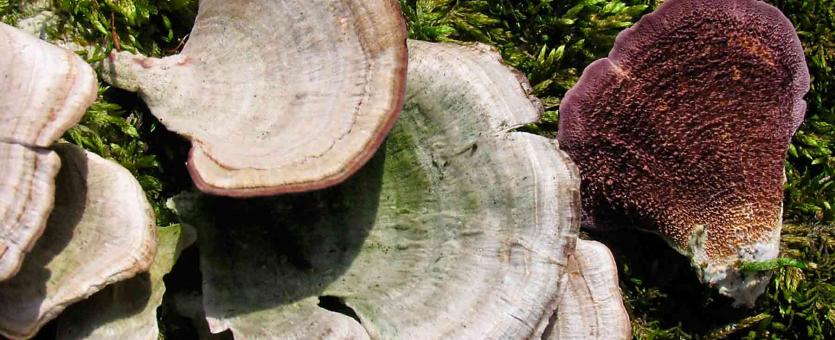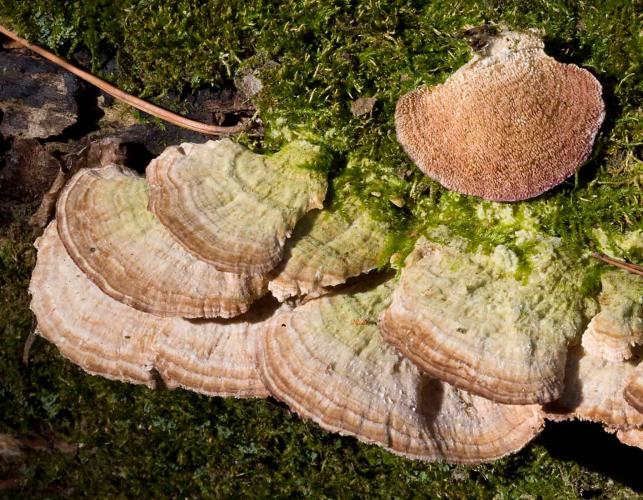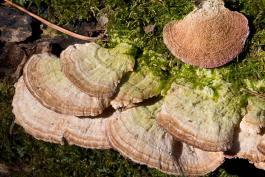
Tough, hairy bracket fungus with violet margins and zones of white, brown, and black; pores whitish violet, breaking into teeth. Grows on stumps and logs of deciduous wood. Year-round. Cap semicircular, flat; zones of white-gray, ochre or dark brown, and brown-black; violet along the margin; texture tough, hairy. Pores angular, becoming toothlike; whitish brown with violet tinge, fading to buff, with violet along the margin. Stalk not present. Spore print white. Spores magnified are cylindrical, smooth.
Lookalikes: Other flat polypores that grow on stumps and logs.
Cap width: ¼–3 inches.

Statewide.
Habitat and Conservation
Grows in layered groups on stumps and logs of deciduous wood. It is very common. You might see hundreds of them “happily eating away” at tree stumps and logs, decomposing the dead wood. The species name, biforme, means “having two forms.” This refers to the underside of the mushroom, which can appear pored or toothlike.
Status
Not edible.
Life Cycle
This species exists as a network of fungal cells (mycelium) within rotting wood. The mycelium obtains nourishment by digesting and decomposing the wood. When ready to reproduce, the mycelium develops the brackets outside the wood, which are reproductive structures. Spores are produced in the pores and are released to begin new mycelia elsewhere.
Human Connections
With its attractive violet color, this mushroom decorates nature, adding to our pleasure on hikes. Like wildflowers, even the humblest of fungi can be strikingly beautiful. Discovering them can bring out our innate capacity for awe and wonder.
Ecosystem Connections
Fungi are vitally important for a healthy ecosystem. This fungus feeds on dead or dying trees, decomposing them in the process. This cleans the forest and helps nutrients to cycle back into the soil—an unglamorous but vital role in the ecosystem.






Mushrooms are a lot like plants, but they lack chlorophyll and have to take nutrients from other materials. Mushrooms are neither plants nor animals. They are in a different kingdom — the fungi. Fungi include the familiar mushroom-forming species, plus the yeasts, molds, smuts, and rusts.
Always be cautious when eating edible mushrooms. Be absolutely sure of the ID, and only eat a small amount the first time you try it to avoid a reaction..





















